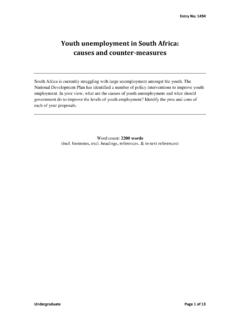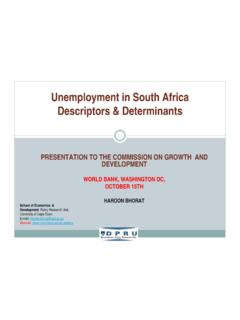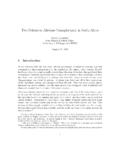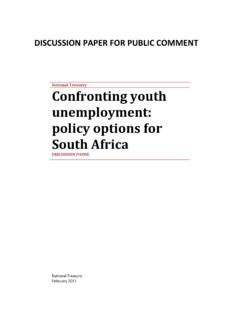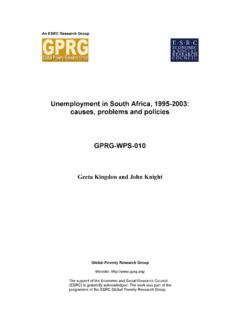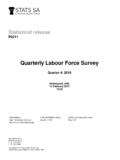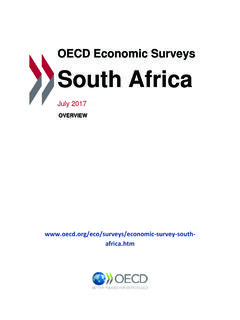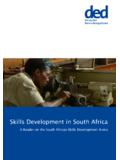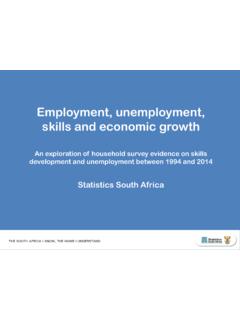Transcription of ACT NOW SOUTH AFRICA - OECD.org
1 Patterns of gender inequality persist in paid workforce and entrepreneurship In SOUTH AFRICA access to primary and secondary education is high with a nearly full enrolment rate for both girls ( ) and boys ( ) between 7 and 15 years. Government policies such as no fee schools and the school nutrition programme have contributed to the high enrolment rates. The remaining issue of school attendance is largely related to gaps in education services in rural areas rather than the motivation of students or preferences of their parents. Since the mid-90s female labour-force participation has seen a stark increase (by 38%) boosting the overall employment levels.
2 Yet by international standards female labour force participation (at 47%) remains low and it is lower than for men averaging to a gap of 14%. Further improvements in women s labour market outcomes are needed. Women s employment too often remains either within the traditional female occupations or within the domestic (97%) and farming sectors. They are often concentrated within positions which are low paying and which have high rates of turnover. The increase in labour force participation in the SOUTH African economy over the past decades has not been matched by an increase in job creation.
3 Today reducing the high unemployment rates together with high poverty rates (28%) are key economic and social challenges in the country. The incidence of poverty is particularly high for African women at 52%. The unemployment rates are higher for women than for men at all ages, but are particularly acute for the youth (15-24 years): 54% for young women and 45% for young men. The difference in unemployment rates partly reflects women s caring responsibilities: women devote, on average, more than twice as much time to household work as men and make 97% of caregivers who qualify for the Child Support Grant.
4 The Child Support Grant, designed to improve the well-being of children, has also had positive impacts on female labour force participation covering the women s fixed costs of finding employment. Gender gaps in labour force participation have decreased Women do twice as much unpaid work than men Male minus female labour force participation rates, 15-64 years old Female minus male paid and unpaid working time in minutes per day SOUTH AFRICA has also seen large increases in the numbers of parliamentary seats occupied by women and it is becoming a country with one of the highest proportions (nearly 45%) of female members of parliament.
5 Yet women remain underrepresented in senior management in the private sector with only 13% of women on boards in listed companies. The prevalence of traditional views of women's role within households limit their opportunities to participate in paid work and entrepreneurial activities. 0102030405060201020001990 Percentage points-300-200-1000100200300 Paid workUnpaid workTotal work Closing the Gender Gap ACT NOW SOUTH AFRICA










